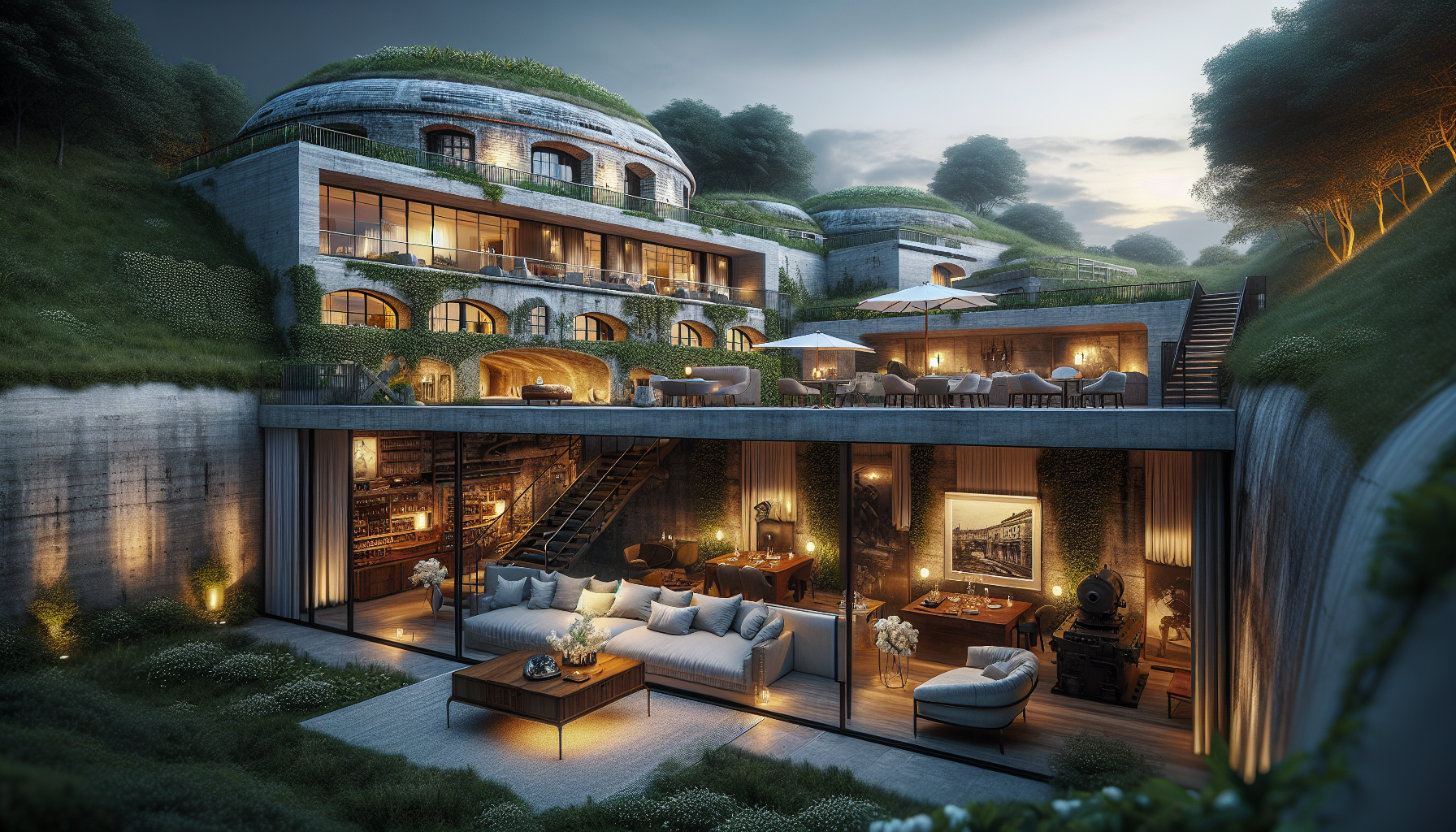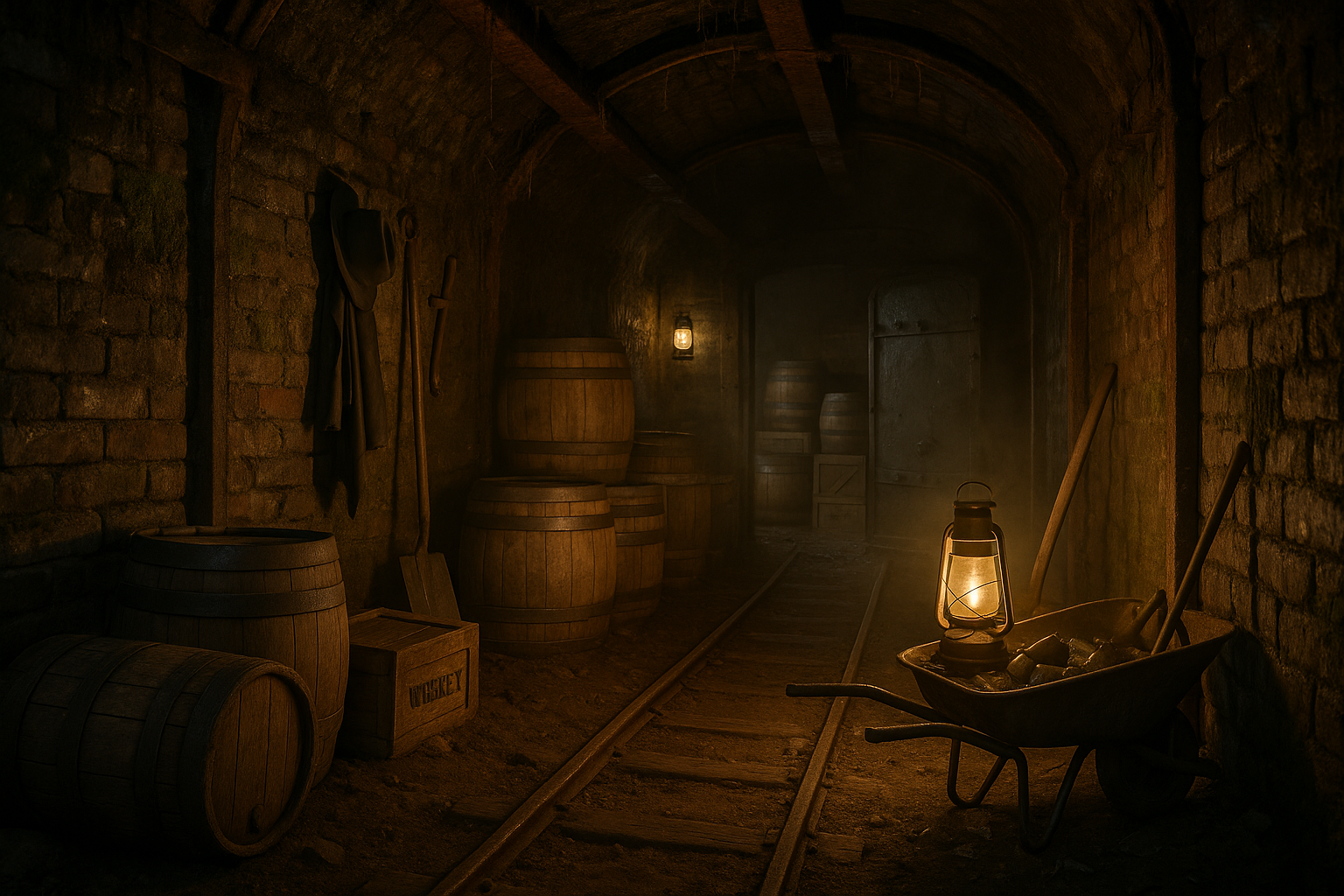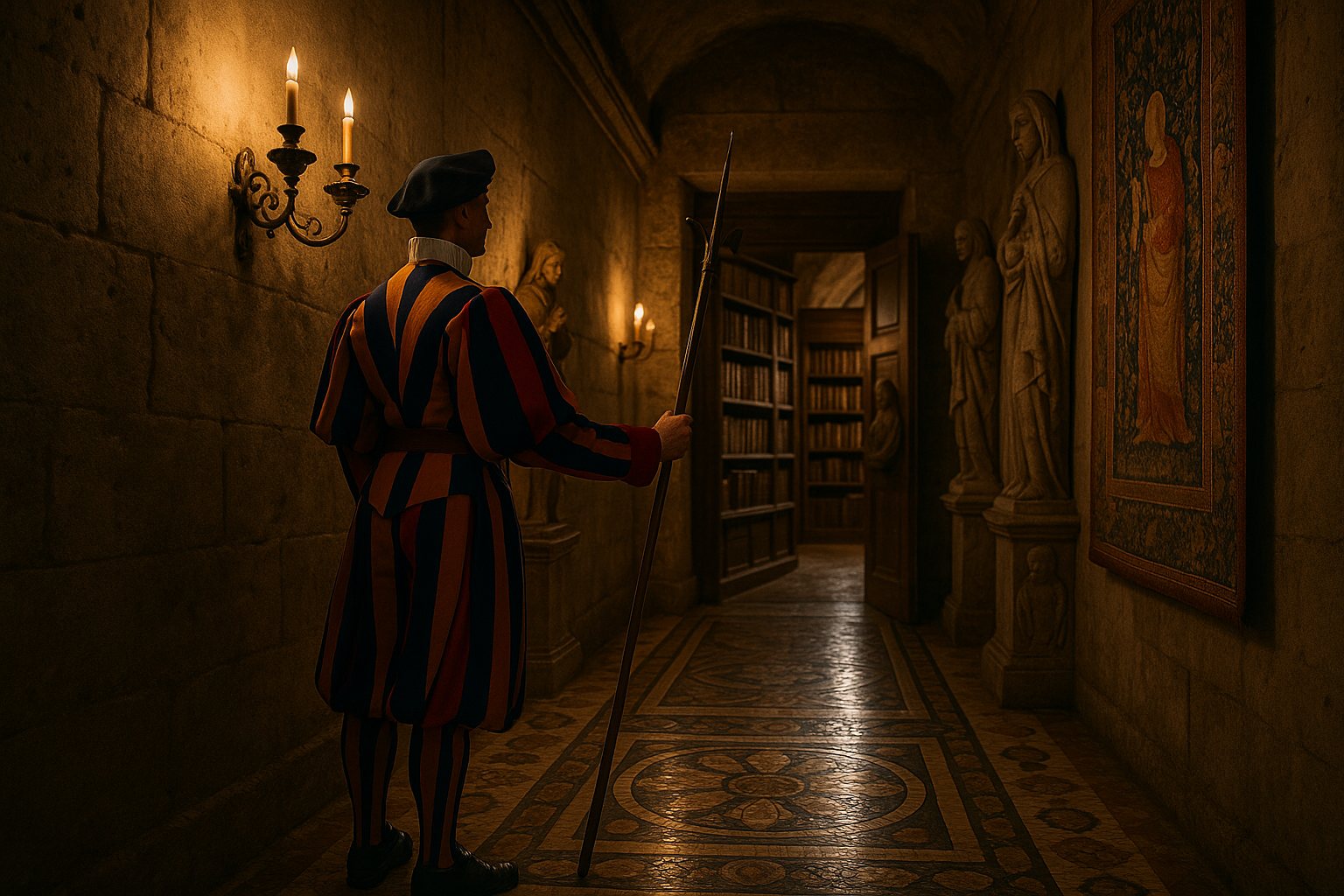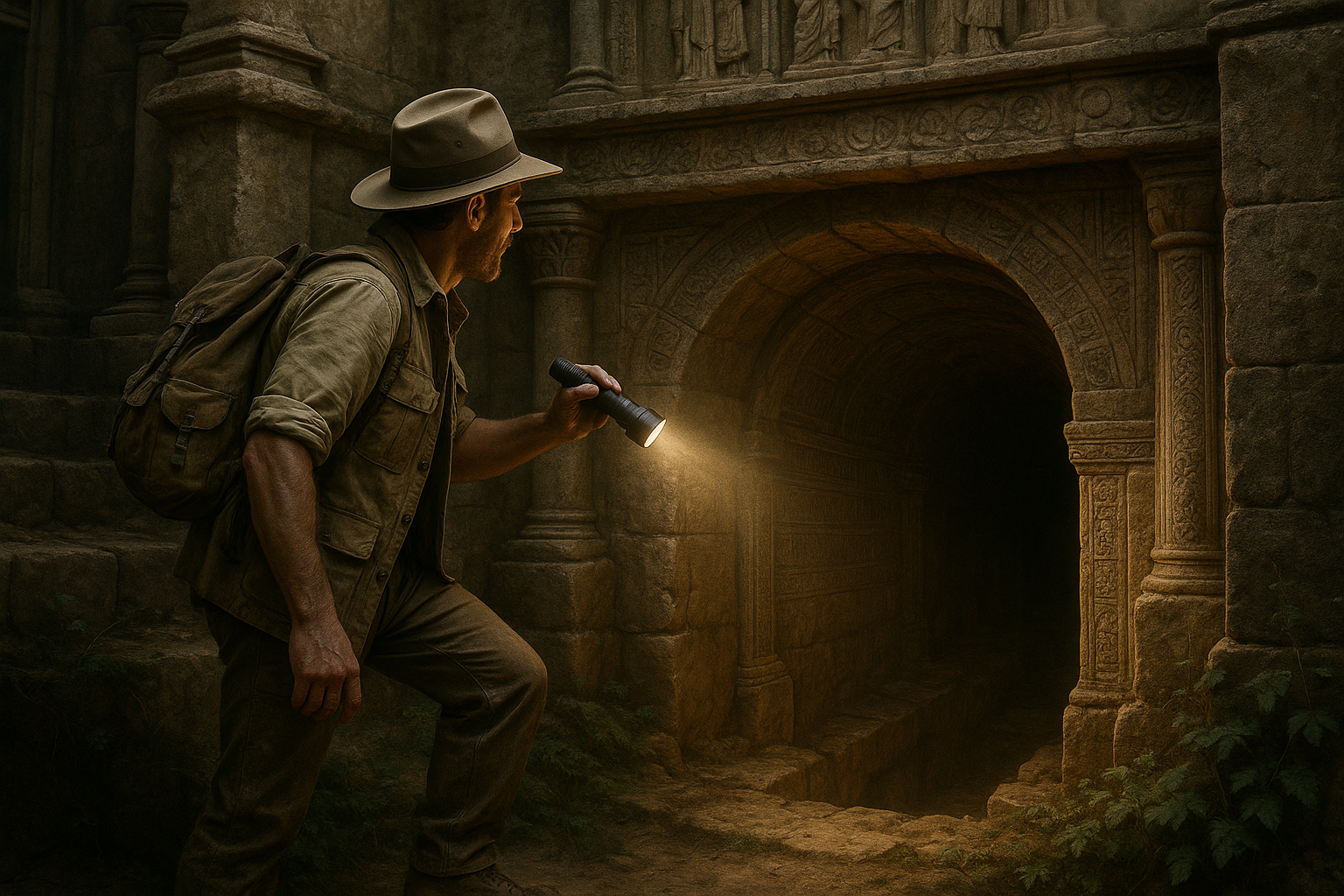In the shadow of conflict and history, World War II bunkers stand as solemn reminders of a time when the world was embroiled in turmoil. Once symbols of war and defense, these concrete fortresses scattered across Europe and beyond have undergone a remarkable transformation, turning from grim relics into places of beauty and reflection. Welcome to a journey that uncovers how these stoic structures have been reimagined into stunning museums and luxury hotels, blending the echoes of the past with the promise of the present. 🏰
The very mention of World War II evokes a tapestry of stories marked by resilience, courage, and innovation. However, the bunkers, which were integral to the wartime landscape, often remain overlooked. Built to withstand the most intense bombardments, these fortifications were feats of engineering and tactical necessity. Yet, as decades have passed, they have been slowly reclaimed by time and nature. What if, instead of being forgotten or demolished, they were revived and given a new purpose? This question has fueled the imagination of architects, historians, and entrepreneurs alike, sparking a movement that marries preservation with reinvention.
In our exploration, we’ll uncover how these formidable structures have been transformed into captivating museums. Imagine walking through a bunker that once served as a nerve center for wartime operations, now a meticulously curated space that tells the stories of bravery and strategy with cutting-edge technology and immersive exhibits. These museums do more than just display artifacts; they invite visitors to step into history, to touch the walls that witnessed so much, and to listen to stories that might otherwise be lost to time. By doing so, they honor the past while educating future generations about the complexities of war.
But the metamorphosis doesn’t stop there. In a surprising twist, many of these bunkers have been converted into luxury hotels, offering an experience like no other. Picture this: spending a night in a plush suite where stark concrete walls have been softened with elegant design, modern amenities, and breathtaking views. These hotels cater to those seeking a unique blend of history and comfort, providing an intimate connection to the past without sacrificing luxury. Each stay becomes a narrative, a bridge between the harsh realities of history and the exquisite pleasures of the present.
The Historical Significance of WWII Bunkers
During World War II, bunkers were constructed as a defensive strategy, designed to protect military personnel and civilians from enemy attacks. These bunkers, often located in strategic areas, served as command centers, ammunition storage, and shelters. As relics of a tumultuous past, they now stand as reminders of the resilience and strategic ingenuity of the era. The transformation of these historical structures into museums and luxury hotels offers a unique opportunity to preserve history while providing modern-day functionalities.
World War II bunkers were built across the globe, each uniquely designed to suit the local geography and strategic needs. For instance, the Atlantic Wall, constructed by Nazi Germany, consisted of bunkers, pillboxes, and fortifications along the coast of continental Europe and Scandinavia. Meanwhile, in the Pacific, the Japanese fortified numerous islands with bunkers and tunnels, preparing for potential Allied assaults. The diversity in design and purpose makes these structures fascinating subjects for historical and architectural study.
The preservation and transformation of WWII bunkers into museums not only safeguard these historical sites but also offer educational opportunities. Visitors can explore these structures, gaining insights into wartime strategies and the experiences of those who lived through the conflict. By converting bunkers into museums, historians and curators can create interactive exhibits that engage and educate the public, fostering a deeper understanding of global history.
From Defense to Display: Bunkers as Museums
The adaptation of bunkers into museums involves meticulous planning and restoration efforts. Curators and architects work together to preserve the integrity of the original structures while making necessary modifications for accessibility and safety. This delicate balance ensures that visitors can experience the authentic atmosphere of these historical sites while learning about their significance during WWII.
One notable example of such a transformation is the Atlantic Wall Museum in Normandy, France. This museum occupies a former German command bunker, offering visitors an immersive experience with original equipment, documents, and personal stories from the war. The museum provides a unique opportunity to step back in time and gain a firsthand understanding of the strategies and conditions of WWII.
To enhance the visitor experience, many museums incorporate interactive exhibits and multimedia presentations. These elements allow visitors to engage with history in a dynamic way, encouraging exploration and discussion. By integrating technology, museums can bring to life the stories and events that shaped our world, making history accessible and engaging for all ages.
The Luxurious Rebirth of WWII Bunkers
In recent years, a trend has emerged where WWII bunkers are being transformed into luxury hotels. This innovative reuse of historical structures not only preserves their legacy but also provides guests with a unique and memorable experience. Staying in a former bunker offers a sense of adventure and novelty, as guests can enjoy modern amenities within a setting steeped in history.
The conversion of bunkers into hotels requires creative architectural solutions to blend the old with the new. Designers must work within the confines of the original structures, often integrating modern design elements that complement the historical features. This fusion of past and present creates a distinctive ambiance, where guests can appreciate the architectural ingenuity of both eras.
For example, the Hotel No Man’s Fort, located in the Solent, UK, is a prime example of such a transformation. Originally a naval fort built in the 19th century and later used during WWII, it has been converted into a luxury hotel offering 22 guest rooms, spa facilities, and fine dining. This unique setting provides guests with breathtaking views and an unparalleled sense of history.
Modern Comforts in Historical Settings
Transforming a bunker into a hotel involves significant renovation and design efforts. Architects and designers must address challenges such as lighting, ventilation, and interior layout while preserving the structure’s historical integrity. The goal is to create a comfortable and luxurious environment that respects the site’s heritage.
Modern amenities, such as high-end furnishings, spa services, and gourmet dining, are integrated into these historical settings to provide guests with a unique and indulgent experience. The juxtaposition of luxury and history creates a captivating atmosphere, inviting guests to immerse themselves in the past while enjoying the comforts of the present.
Luxury hotels within bunkers offer exclusive experiences that appeal to a niche market of travelers seeking adventure and history. Guests can explore the original structures, learn about their historical significance, and enjoy the unique setting. This blend of history and luxury creates a memorable experience that is both educational and indulgent.
Table of WWII Bunkers Transformed into Museums and Hotels
To better understand the diversity and scale of these transformations, consider the following table which highlights notable examples of WWII bunkers that have been converted into museums and luxury hotels:
| Bunker Location | Original Purpose | Current Use | Features |
|---|---|---|---|
| Normandy, France | German Command Bunker | Museum | Interactive exhibits, WWII artifacts |
| Solent, UK | Naval Fort | Luxury Hotel | 22 guest rooms, spa, fine dining |
| Berlin, Germany | Civilian Shelter | Museum | Historical tours, multimedia displays |
| Oslo, Norway | Coastal Defense Bunker | Luxury Hotel | Scenic views, modern amenities |
Additional Resources
To further explore the fascinating transformation of WWII bunkers, consider watching related videos that delve into the history and architecture of these unique structures. For an engaging visual experience, check out “The Atlantic Wall: Hitler’s Coastal Fortress” on the YouTube channel Simple History. This video provides an in-depth look at the strategic significance of the Atlantic Wall during WWII.
- Explore the transformation of historical bunkers by visiting these unique museums and hotels.
- Experience history firsthand through interactive exhibits and guided tours.
- Enjoy the blend of modern luxury and historical ambiance by staying at a bunker-turned-hotel.
For a visual exploration of the transformations discussed, watch the video linked here: The Atlantic Wall: Hitler’s Coastal Fortress. This video provides a comprehensive overview of the Atlantic Wall’s history and its significance during WWII, complementing the information presented in this article.

Conclusion
As we reach the conclusion of our exploration into the captivating metamorphosis of WWII bunkers into museums and luxury hotels, we stand in awe of how history and modernity have intertwined to create spaces of profound significance and beauty. These transformations serve as powerful reminders of human resilience, creativity, and the relentless pursuit of peace and remembrance.
To recap, our journey began by delving into the historical significance of WWII bunkers. These formidable structures were originally designed for protection during one of the darkest periods in modern history. Built to withstand the harshest of conditions, they have remained standing long after the last echoes of war have faded. This endurance is a testament to the engineering prowess and strategic importance that characterized their initial purpose.
We then examined the remarkable shift in perception and usage of these bunkers over the years. As time distanced us from the immediate horrors of war, a new narrative emerged—one that saw potential in the preservation and repurposing of these monolithic structures. The transformation process itself is a fascinating blend of architectural innovation and historical preservation, requiring a delicate balance between maintaining the integrity of the original structure and adapting it for modern use.
One of the most striking examples of this transformation is the conversion of bunkers into museums. These museums serve as vital educational resources, preserving the memory of the past while providing insights into the events and lives affected by the war. Through thoughtfully curated exhibits and interactive experiences, visitors are invited to engage with history in a manner that is both informative and immersive. This not only honors those who lived through these tumultuous times but also ensures that future generations understand the complexities of history.
Equally intriguing is the conversion of bunkers into luxury hotels. This innovative use of space showcases human ingenuity at its finest, turning what was once a symbol of conflict into a sanctuary of peace and relaxation. Guests are offered a unique blend of history and comfort, where the past is not just remembered but also experienced in an entirely new light. These hotels often feature stunning designs that highlight the original architectural elements of the bunkers, creating a harmonious blend of past and present.
The transformation of WWII bunkers into spaces of learning and luxury underscores a broader cultural shift towards finding beauty in unexpected places. It is a testament to the idea that even the most somber relics of history can be reimagined to serve new purposes—ones that promote understanding, healing, and appreciation.
As we close this discussion, it is crucial to reinforce the importance of such transformations. They serve not only as reminders of our shared history but also as beacons of hope and progress. By preserving and reinterpreting these structures, we ensure that the lessons of the past are not forgotten and that the sacrifices made are honored in meaningful ways.
We encourage you, our readers, to reflect on the stories and lessons shared in this exploration. Consider visiting these transformed bunkers, whether as museums or hotels, to experience firsthand the remarkable journeys they have undergone. Engage with the history they hold, and allow yourself to be inspired by the innovative ways in which they have been repurposed.
Furthermore, we invite you to share your thoughts and experiences. Have you visited a converted bunker? How did it impact your understanding of history or your appreciation for architectural innovation? Your insights are invaluable and can contribute to a richer conversation about the significance of preserving and transforming historical sites.
Share this article with friends, family, and fellow history enthusiasts. By spreading awareness, we can foster a greater appreciation for the creative ways in which history is being preserved and reimagined. Encourage others to explore these fascinating transformations and perhaps even inspire similar projects in other historical contexts.
In conclusion, the journey from bunkers to beauties is not just about physical transformation but also about changing perceptions and inspiring future generations. It is about acknowledging the past while paving the way for a future where history and innovation coexist harmoniously. Let us embrace these transformations with open hearts and minds, celebrating the remarkable potential of human creativity and resilience. 🌍✨
For further reading on this topic, we recommend exploring resources from reputable historical preservation sites such as the National Trust for Historic Preservation National Trust for Historic Preservation and the International Council on Monuments and Sites ICOMOS. These organizations offer invaluable insights into the ongoing efforts to preserve and repurpose historical sites worldwide.
Toni Santos is a visual storyteller and artisan whose work explores the quiet power of what lies beneath. With a deep fascination for subterranean and hidden architecture, Toni uncovers the layers, voids, and forgotten spaces that shape our built environment from the shadows.
His art is a journey through the unseen — from ancient underground chambers to sealed passageways, service tunnels, and foundations buried in time. Each creation tells a story of silence, secrecy, and structure — revealing how absence and concealment can be just as meaningful as what’s visible above ground.
Whether working through visual compositions, architectural studies, or symbolic handcrafted pieces, Toni captures the soul of hidden spaces. His work bridges art and archaeology, blending design with discovery. Trained in visual design and traditional techniques, Toni creates with intention. His pieces don’t just depict — they interpret, inviting viewers to rethink what space, memory, and architecture mean when they’re hidden from view.
As the creative force behind Vizevex, Toni shares this perspective through curated visual narratives, symbolic collections, and interpretive essays that give voice to the quiet geometries beneath our feet.
His work is a tribute to:
The mystery of spaces built to be forgotten
The symbolism embedded in foundations, voids, and passageways
The timeless connection between human intention and hidden structure
Whether you’re an artist, an urban explorer, or someone fascinated by the unseen frameworks that support our world, Toni invites you into a realm where architecture becomes myth — one corridor, one layer, one buried story at a time.





